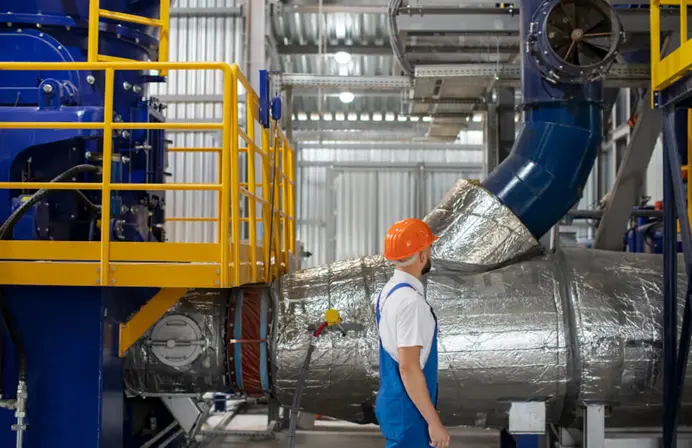Deep Freeze Revolution: Why Brine & Water Chillers Are Ground Zero for Green Tech

The industrial cooling landscape is undergoing a dramatic, complex transformation, and the compressor chiller is at the epicenter. Essential for process control across the chemical, pharmaceutical, and food and beverage sectors, chillers are moving beyond simple temperature management to become highly efficient, digitally integrated systems.
The focus is no longer just on chilling water—or more intensely, brine (a glycol solution that achieves temperatures as low as −40∘C)—but on tackling the twin global challenges of energy consumption and climate-damaging refrigerants.
The Precision of Process Cooling
In commercial and industrial settings, the chiller’s function is far more demanding than simple comfort cooling (HVAC). Brine & water chillers are the foundation of process cooling, providing the precise, stable, and continuous heat removal necessary to maintain product quality and operational integrity.
- Ultra-Low Temperature Needs: Brine chillers are indispensable for ultra-low temperature applications, particularly in the pharmaceutical industry for preserving sensitive vaccines and reagents, and in the chemical sector for cooling exothermic reactions. The use of a glycol solution enables temperatures far below the freezing point of water, ensuring critical processes remain stable.
- Widespread Industrial Use: Water-cooled chillers are the workhorse for large-scale facilities, leveraging cooling towers to dissipate heat more efficiently than air-cooled counterparts. Applications range from cooling injection molds in plastics manufacturing to maintaining the temperature of electroplating baths and providing robust chilling for large data centers.
Reliability is paramount. For a food processor, a temperature deviation can mean spoiled inventory; for a data center, it risks server overheating and catastrophic downtime. This criticality is driving massive investment in next-generation chiller technology.
The Green Compressor: Efficiency and Regulation
The modern compressor chiller is now a sophisticated marvel of engineering, largely driven by regulatory mandates like the EU F-gas Regulation and the US AIM Act, which are phasing down high Global Warming Potential (GWP) refrigerants.
- Natural Refrigerants: The transition is accelerating towards natural refrigerants such as CO2 (Carbon Dioxide) and NH3 (Ammonia). While ammonia dominates large industrial applications due to its superior efficiency and zero GWP, CO2 transcritical systems are rapidly gaining ground in commercial and food retail environments. Manufacturers are now designing chillers to handle these substances, which often require new component materials and higher operating pressures.
- Variable Speed Drives (VSD): The mechanical heart of the chiller, the compressor, is being revolutionized by VSD technology. VSD compressors adjust their motor speed in real-time to match the cooling load, maximizing efficiency at partial loads—a condition where traditional chillers lose considerable energy. This can lead to double-digit energy savings and significantly lower operational costs.
- Modular and Compact Design: Innovation in compressor and heat exchanger technology is leading to smaller, more compact chiller footprints without sacrificing capacity or efficiency. This allows facilities to employ modular chiller systems, which enhance redundancy, simplify maintenance, and allow for easier scaling to meet future production demands.
The Future is Smart: IoT and Predictive Cooling
The final layer of this revolution is digitalization. New chiller installations integrate deeply with factory and building management systems via IoT connectivity.
Sensors collect real-time data on everything from refrigerant pressure and water flow to ambient conditions. This flood of data feeds predictive maintenance systems, allowing operators to preemptively service or replace components like heat exchangers or valves based on actual performance wear, rather than rigid schedules.
This focus on smart chiller technology is not just about extending equipment life; it’s about unlocking new tiers of energy efficiency. By constantly optimizing performance and providing a stable, reliable cooling foundation, the once-humble chiller system has emerged as a key infrastructure technology for the sustainable, automated industry of tomorrow.
Also Read-Deep Freeze Revolution: Why Brine & Water Chillers Are Ground Zero for Green Tech

